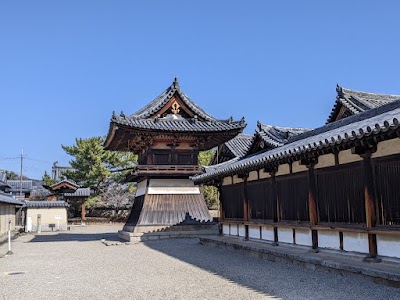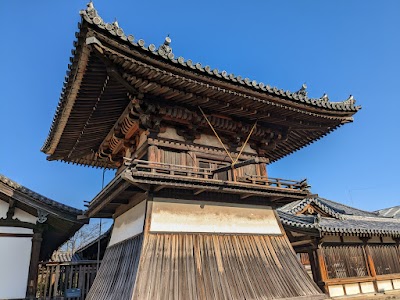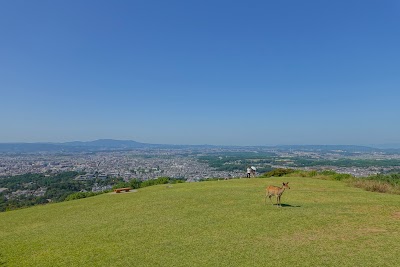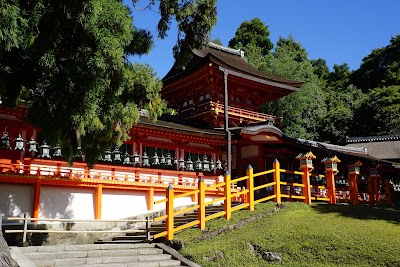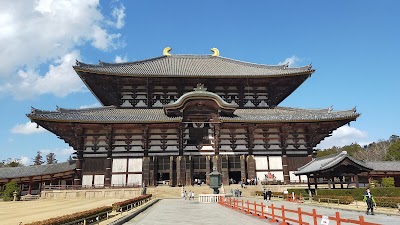Hōryū-ji Temple (法隆寺)
Overview
Hōryū-ji Temple, nestled in the scenic Nara Prefecture of Japan, stands as one of the most significant Buddhist temples in the world, offering a captivating glimpse into Japan's early history and architectural achievements. Founded by the visionary Prince Shōtoku in the early 7th century, Hōryū-ji is celebrated as one of the oldest wooden structures still in existence. This ancient temple complex not only reflects the profound influence of Buddhism on Japanese culture but also remains a vital site for both pilgrimage and tourism.
Originally constructed in 607 AD, Hōryū-ji faced a devastating fire and was rebuilt around 670 AD, showcasing the resilience and devotion of the Japanese people in preserving their spiritual heritage. As you stroll through the temple grounds, you will feel as if you've been transported back in time, surrounded by historic buildings that have withstood the test of over a millennium. The temple is divided into two main precincts: the Western Precinct (Sai-in) and the Eastern Precinct (Tō-in), each housing a variety of historically significant structures and artifacts.
In the **Western Precinct**, you will encounter the iconic **Five-Storied Pagoda** and the **Kondō (Main Hall)**, both masterpieces of Asuka-period architecture. The intricately designed Five-Storied Pagoda stands approximately 34.5 meters tall and is believed to house sacred relics of the Buddha. The Kondō, or Golden Hall, is equally fascinating, featuring stunning woodwork and housing some of Japan’s oldest Buddhist statues, offering a unique insight into early Japanese artistry.
Moving to the **Eastern Precinct**, you will find the **Yumedono (Hall of Visions)**, an exquisite octagonal hall dedicated to Prince Shōtoku. This hall is particularly noteworthy for housing the revered **Guze Kannon** statue, which has been kept secret for centuries and is believed to possess miraculous properties. This precinct provides a more intimate experience with fewer crowds, creating a serene ambiance for reflective thought and appreciation of the site's spiritual significance.
Hōryū-ji is not merely an architectural marvel; it also holds immense cultural and historical importance. In 1993, it was designated as a **UNESCO World Heritage site** under the title "Buddhist Monuments in the Hōryū-ji Area," recognizing its invaluable contribution to humanity. Scholars and history enthusiasts can explore the temple's rich past through ancient texts and artifacts on site, learning about its foundational role in the spread of Buddhism throughout Japan.
The temple grounds also feature a treasure trove of historical artifacts housed in the **Daihōzōin (Great Treasure House)**. Here, visitors can discover invaluable scrolls, pottery, and relics that provide tangible insights into Japan's cultural and religious evolution. As you wander through the museum, you’ll marvel at over 3,000 National Treasures and Important Cultural Properties, each telling its own unique story.
A visit to Hōryū-ji is more than just a sightseeing tour; it’s an educational journey. The temple offers English-language guided tours and informative signage, making it accessible to international visitors. Throughout the year, seasonal events and ceremonies showcase traditional Japanese culture, allowing guests to witness the temple's ongoing role as a living place of worship.
For the most enriching experience, consider planning your visit in spring or autumn when the complex is adorned with beautiful cherry blossoms or vibrant autumn leaves, enhancing the architectural beauty of the wooden structures. Be sure to wear comfortable shoes, as the temple complex is extensive, and you'll want to take your time exploring every corner.
In conclusion, **Hōryū-ji Temple** is a remarkable destination that enchants visitors with its ancient history, architectural splendor, and profound spiritual legacy. Whether you’re a history buff, an architecture enthusiast, or simply someone seeking a deeper understanding of Japan's cultural roots, a visit to Hōryū-ji will leave a lasting impression. It offers a rare opportunity to step back in time and walk through one of humanity’s most enduring landmarks, beautifully bridging the gap between the past and present.


